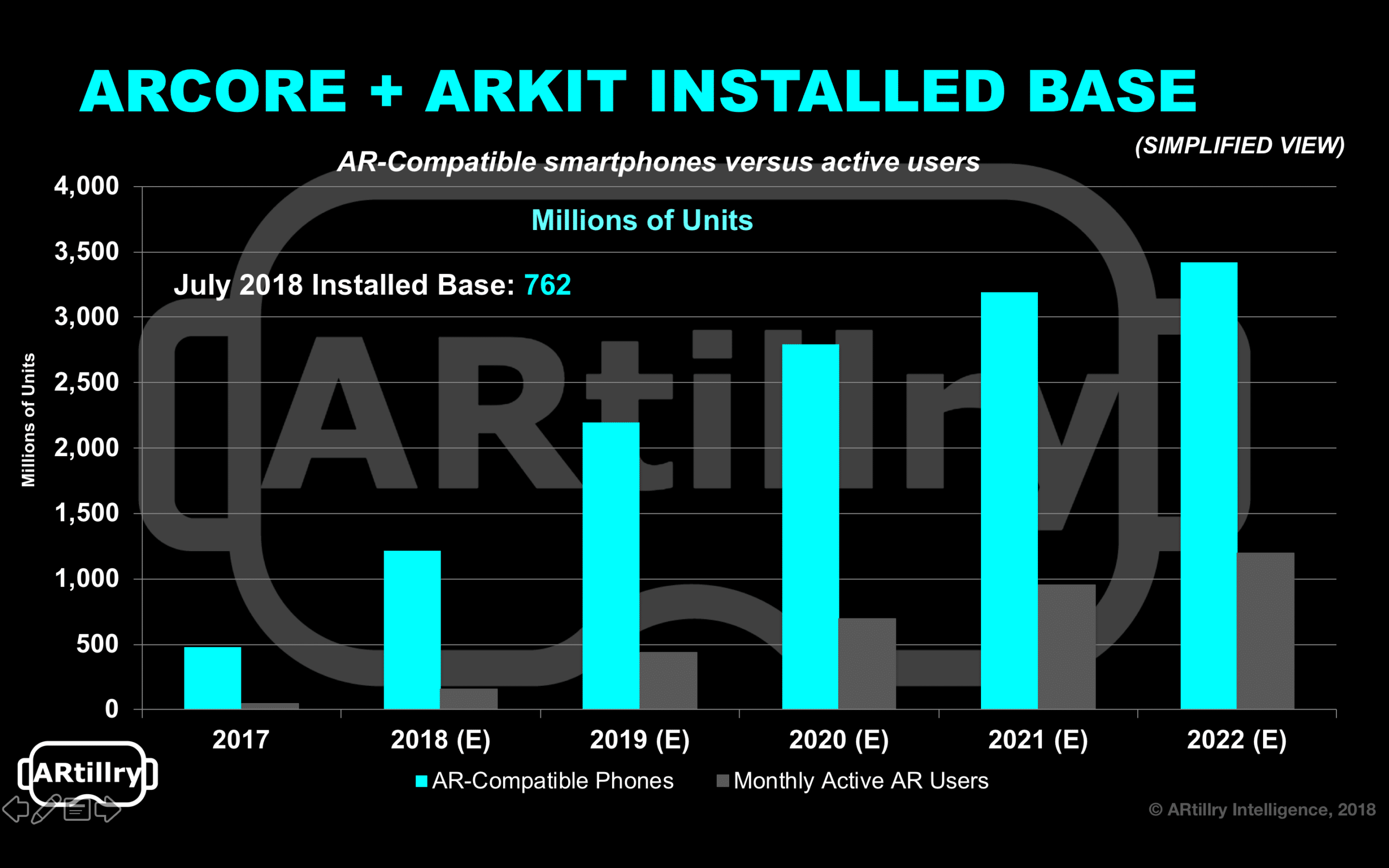
ARtillry Briefs is a video series that outlines the top trends we’re tracking, including takeaways from recent reports and market forecasts. See the most recent episode below, and past installments are here.
The biggest areas transformed by Internet and mobile revolutions were arguably media & advertising. As we enter an age of visually immersive tech, we believe they’re again primed for disruption. We tackle this in our recent report and episode of ARtillry Briefs (see above).
AR’s visual interactivity aligns with advertising’s core goals. It can enhance “upper funnel” (e.g. awareness) ads by letting consumers interact with products. And “lower funnel” actions (e.g. conversions) are achieved by contextualizing products at or near the point of purchase.
And that range makes AR advertising map to the formats that advertisers have used for years. We have impression-based display advertising and direct-response search advertising. Those modalities will develop in AR with similar dynamics and user intent (AR lenses and visual search).

Drilling down, we project AR advertising to grow to $2.6 billion by 2022. That’s mostly AR lenses today, but will shift to search-based ads that develop in products like Google Lens. Though more complex, visual search will be a valuable, high-intent ad medium — just like search is today.
Further boosting AR advertising’s potential are quantitative signals. The opportunity piggybacks on AR’s scale: ARtillry Intelligence pegs mobile AR’s installed base at 762 million smartphones at the time of this writing. This is key, given that brand advertisers are reach driven.
We’re also seeing proof points of AR advertising’s efficacy and ROI. Among several key performance indicators (KPIs) detailed in our latest report, AR is already proving that it can boost consumer purchase intent by 11x, and time spent with media by 2.7x (Houzz).
Influential tech giants are also investing heavily in AR advertising, providing further confidence in its opportunity. Ad-dominant business models at Facebook and Google have motivated significant resources to ensure positioning in advertising’s next era, thereby accelerating AR overall.

But it’s not all positive signals. Advertisers will be slow to adopt (as they often are), and already indicate some uncertainty. And mobile AR presents challenges such as diminished ad inventory through short session lengths, which can result from arm fatigue and other form-factor realities.
Further jeopardizing available ad inventory are questions of reach. Though the installed base of compatible AR smartphones is sizable, as noted, a more relevant figure is active AR users. That figure stands at about 158 million users today, which is fragmented between different AR apps.
So where do all of the advantages and potential drawbacks come together and indicate the path forward for mobile AR advertising and business models? We examine all these factors in our recent intelligence briefing, including bull and bear perspectives, and our ultimate revenue outlook.
It’s also broken down in the latest episode of ARtillry Briefs, which you can see below.
For deeper XR data and intelligence, join ARtillry PRO and subscribe to the free ARtillry Weekly newsletter.
Disclosure: ARtillry has no financial stake in the companies mentioned in this post, nor received payment for its production. Disclosure and ethics policy can be seen here.
